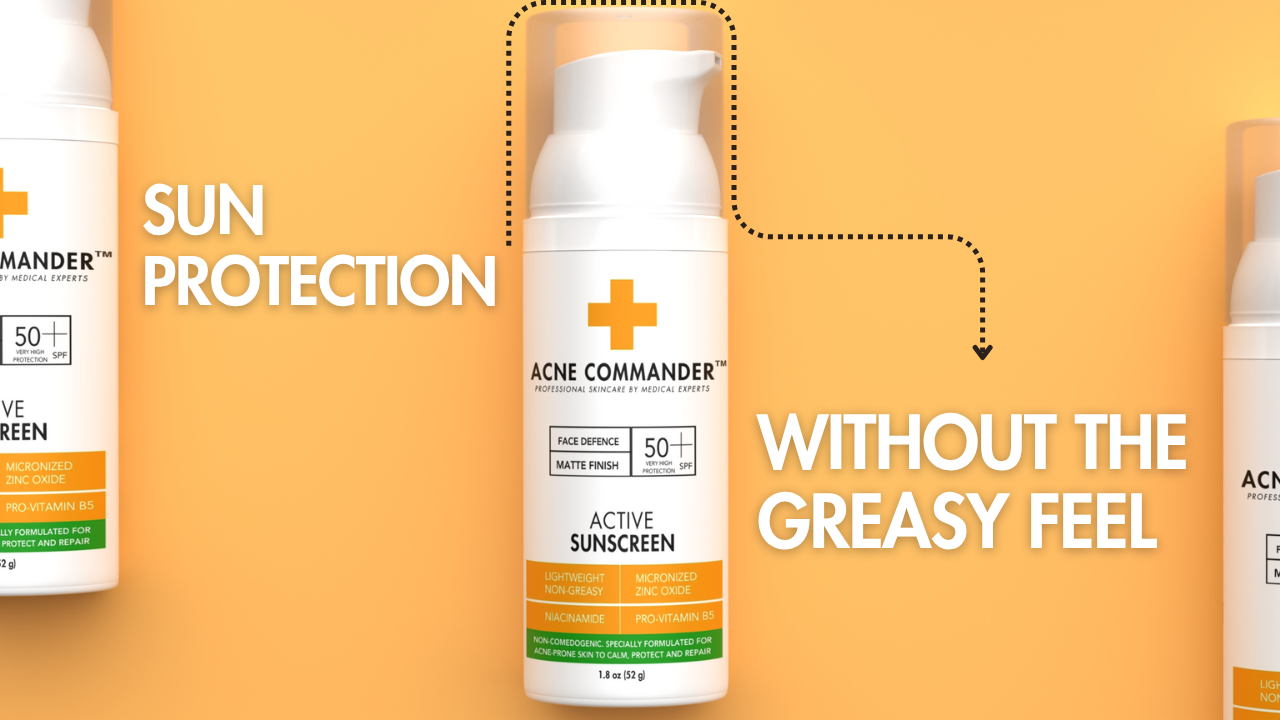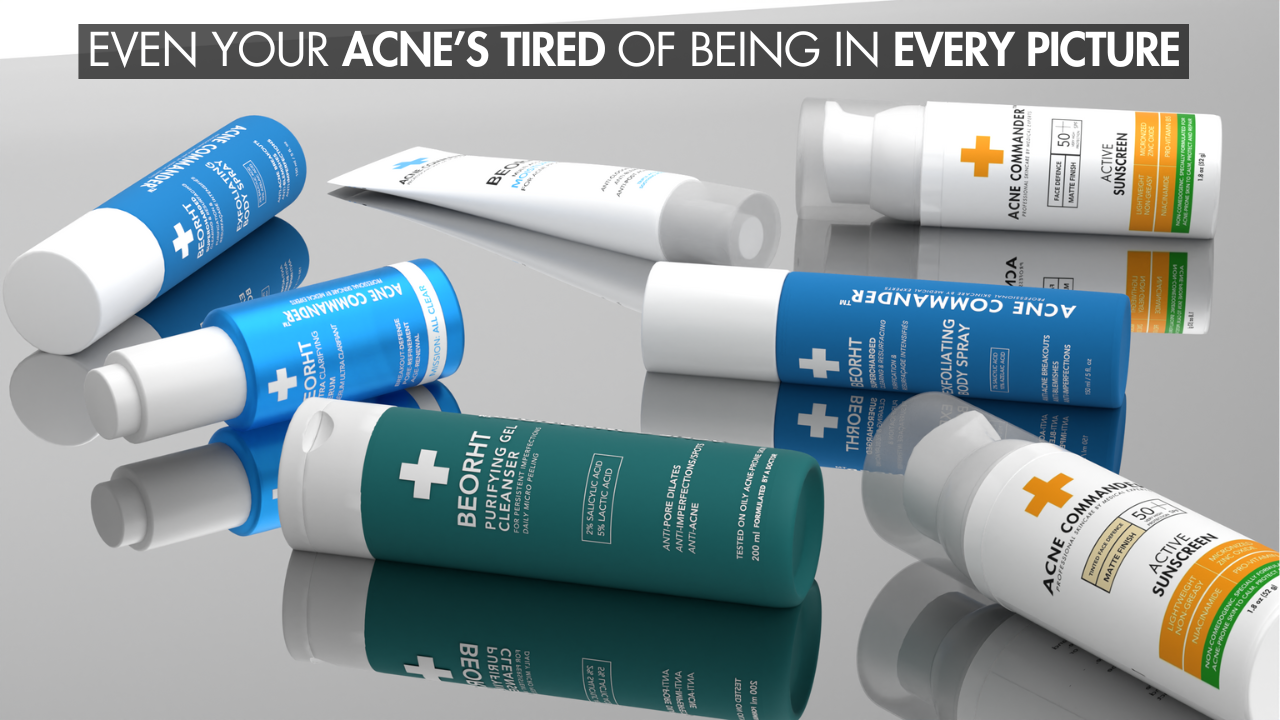Introduction: DIY Meets Dermatology, Can You Really Make Your Own Acne-Safe Moisturizer?
If you’ve spent hours browsing skincare aisles or scrolling through acne product reviews, you’ve probably asked yourself: “What if I just make my own moisturizer?” With the clean beauty trend and ingredient transparency taking center stage, the idea of crafting your own acne-friendly face moisturizer has become more appealing than ever.
But there’s a catch: Acne-prone skin is highly sensitive, and one wrong ingredient can trigger a breakout or worsen inflammation. While DIY skincare can be empowering and budget-friendly, making a truly effective, non-comedogenic, acne-safe moisturizer requires more than just mixing oils and aloe.
In this in-depth guide, you’ll learn:
-
The science behind moisturizers for acne
-
Which ingredients to use (and which to avoid)
-
Step-by-step recipes
-
How DIY compares to professional-grade formulas like Acne Commander 3-in-1 Repairing Moisturiser, which combines hydration, treatment, and barrier repair in one step
Let’s dive in.
Why Acne-Prone Skin Needs Moisturizer, Even When It Feels Oily
Contrary to popular belief, moisturizing is one of the most important steps in treating acne.
Here’s why:
-
Acne treatments (e.g., salicylic acid, benzoyl peroxide, retinoids) can dry out your skin
-
Dry skin overcompensates by producing more oil
-
A weakened skin barrier becomes more prone to inflammation, bacterial infections, and scarring
-
Proper hydration reduces redness, peeling, and irritation
The right moisturizer won’t clog your pores, it will support your skin in fighting acne more effectively.
Moisturizer Basics: The 3 Components Every Formula Needs
A great face moisturizer for acne must balance hydration, barrier support, and non-comedogenicity. You need the following:
1. Humectants
(hydrate by drawing water into skin)
-
Glycerin
-
Aloe Vera
-
Honey (optional)
2. Emollients
(smooth skin by filling cracks)
-
Jojoba Oil
-
Rosehip Oil
-
Squalane
3. Occlusives
(seal hydration in)
-
Beeswax or Candelilla Wax (used sparingly)
-
Refined Shea Butter (for dry skin types only)
✅ Pro Tip: Keep comedogenic ingredients out of your recipe, even some popular natural ones.
What to Avoid in a DIY Moisturizer for Acne
Some ingredients, although “natural,” are harmful to acne-prone skin.
|
Ingredient |
Why It’s a Problem |
|
Coconut Oil |
Highly comedogenic (clogs pores) |
|
Essential Oils |
Irritating (especially citrus, tea tree, peppermint) |
|
Raw Dairy (Milk/Yogurt) |
Can introduce bacteria |
|
Unrefined Shea Butter |
Too heavy for face use |
|
Olive Oil |
Moderate comedogenicity |
|
Fragrance / Perfume |
Can inflame sensitive skin |
Stick to ingredients with a comedogenic rating of 0–2 only.
Equipment Checklist for Making a Safe Moisturizer
-
Sterilized glass mixing bowl
-
Mini whisk or clean spatula
-
Airtight dark glass jar (pre-sanitized)
-
Gloves (optional but helpful)
-
Refrigerator for storage
Best DIY Moisturizer Recipes for Acne
Here are three tried-and-tested formulations tailored for different acne-prone skin type💧
Recipe 1: Oil-Free Hydrating Gel (For Oily Acne-Prone Skin)
Ingredients:
-
2 tbsp pure aloe vera gel
-
1 tsp vegetable glycerin
-
2 drops panthenol (vitamin B5)
-
Optional: 1 drop niacinamide serum
Instructions:
-
Mix aloe and glycerin in a sterilized bowl.
-
Add panthenol and niacinamide, stir well.
-
Store in fridge; lasts 5–7 days.
Benefits:
-
Lightweight and cooling
-
Soothes redness and inflammation
-
Great post-acne treatment step
Recipe 2: Jojoba + Rosehip Light Cream (For Combo Skin)
Ingredients:
-
1 tbsp jojoba oil
-
1 tsp rosehip seed oil
-
1 tbsp aloe vera gel
-
1/2 tsp glycerin
-
Optional: 1 capsule vitamin E
Instructions:
-
Mix oils together first.
-
Add aloe and glycerin slowly.
-
Blend until smooth. Store airtight.
Benefits:
-
Hydrates and nourishes without clogging
-
Helps fade acne scars
-
Ideal for dry areas of combo skin
🛡️
Recipe 3: Night Repair Balm (For Dry Acne Skin)
Ingredients:
-
1 tsp refined shea butter (melted)
-
1 tsp jojoba oil
-
3 drops squalane
-
1 vitamin E capsule (optional)
Instructions:
-
Melt shea butter on low heat.
-
Blend in oils and mix well.
-
Let cool, store in fridge. Use at night only.
Benefits:
-
Seals in moisture
-
Softens rough patches
-
Safe for dry acne-prone skin (use sparingly)
How Long Do DIY Moisturizers Last?
-
Without preservatives: 5–7 days (refrigerated)
-
Oil-based recipes: Up to 14 days
-
Never reuse leftovers past 2 weeks
-
Label and date your batch
Safety Tips for DIY Formulations
-
Always do a patch test
-
Use distilled water if needed, never tap
-
Avoid dipping fingers into the jar, use a clean spatula
-
Store in the refrigerator, away from light and humidity
-
If it changes color, smell, or texture, discard immediately
Why Professional Formulas Still Outperform DIY (In Most Cases)
While DIY moisturizers can be helpful for those with very mild acne or ultra-sensitive skin, they have limitations:
|
Limitation |
Why It Matters |
|
No preservatives |
Risk of bacterial contamination |
|
Lack of acne actives |
Doesn’t treat clogged pores or inflammation |
|
Poor stability |
Ingredient separation or pH imbalance |
|
Comedogenic risk |
DIYers may unknowingly use pore-clogging oils |
|
No clinical trials |
Effectiveness is anecdotal |
That’s where professionally developed products like Acne Commander 3-in-1 Repairing Moisturiser come in.

Why Acne Commander Is Better Than Any DIY Moisturizer
Unlike DIY options, Acne Commander was scientifically formulated to perform across all acne stages: prevention, treatment, and recovery.
🔬 Key Benefits:
-
Hydration: Glycerin, mannose, propanediol
-
Exfoliation: Salicylic acid + capryloyl salicylic acid
-
Redness Reduction: Niacinamide, zinc PCA, allantoin
-
Barrier Repair: Ceramide-like 2-Oleamido-1,3-Octadecanediol
-
Microbiome Balance: Vitreoscilla ferment
-
Oil Control: Silica + rice starch
Texture:
-
Lightweight gel-cream
-
Absorbs fast, leaves no residue
-
Works under makeup and sunscreen
-
Non-comedogenic, dermatologist-tested
Combining DIY with Professional Skincare: Smart Strategy or Risk?
You can mix and match if you understand the chemistry.
For example:
-
Use a DIY aloe + glycerin gel in the morning
-
Use Acne Commander as your evening treatment + hydrator
But beware of layering products with overlapping or conflicting ingredients (e.g., strong acids, essential oils, or multiple exfoliants).
FAQs: Making a Face Moisturizer for Acne
❓ Can I use coconut oil in a homemade moisturizer?
No. It is highly comedogenic and can worsen breakouts.
❓ What is the best oil for acne-prone skin?
Jojoba, squalane, and rosehip seed oil are the safest.
❓ Do I need to use preservatives?
Not for short-term batches (used within 7–10 days), but long-term DIY storage requires proper preservation, which is complex and risky to DIY.
❓ Should I use a DIY moisturizer every day?
If the formula is well-tolerated and non-comedogenic, yes, but monitor your skin closely.
Conclusion: Making Your Own Face Moisturizer for Acne, Smart, Safe, and Strategic
If you want control over your skincare, making your own face moisturizer for acne is a great starting point, but it requires precision. Use safe, acne-friendly ingredients, maintain sterility, and start with short-term, fridge-safe batches.
However, if you’re battling persistent acne, inflammation, or acne scarring, you’ll likely outgrow DIY formulas quickly. That’s when switching to a product like Acne Commander 3-in-1 Repairing Moisturiser makes all the difference.
It gives you the hydration of aloe, the clarity of salicylic acid, the barrier repair of ceramides, and the soothing power of ferments, all in one step.





